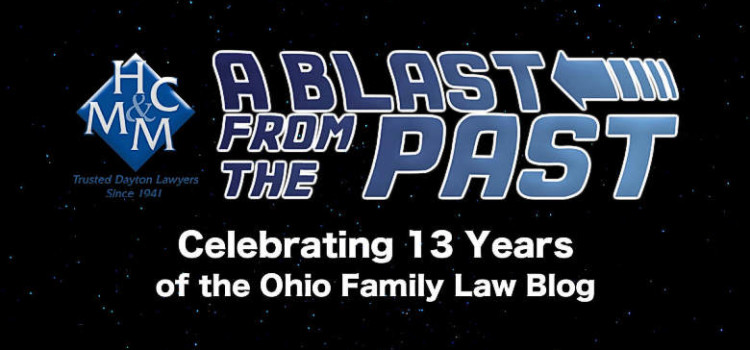
PUBLISHERS NOTE: “This post and my comments from 2010 were dead on! Society has seemingly accepted this household incomes reversal perhaps due more to gender equality acceptance. Not shocking, but women are no happier now paying alimony than men were back in the 1980’s.”
Modern Household Incomes: More Men Marrying Wealthier Women
 In a recent analysis of census data, the Pew Research Center found that the institution of marriage has undergone significant changes in recent decades as women have outpaced men in education and earnings growth. The study examined American’s 30 to 44 years old, a stage of life when typical adults have completed their education, have gone to work and gotten married. “Men now are increasingly likely to marry wives with more education and income than they have, and the reverse is true for women,” said Paul Fucito, spokesman for the Pew Center. “In recent decades, with the rise of well-paid working wives, the economic gains of marriage have been a greater benefit for men.” Clearly, these unequal gains have been accompanied by gender role reversals in both the spousal characteristics and the economic benefits of marriage.
In a recent analysis of census data, the Pew Research Center found that the institution of marriage has undergone significant changes in recent decades as women have outpaced men in education and earnings growth. The study examined American’s 30 to 44 years old, a stage of life when typical adults have completed their education, have gone to work and gotten married. “Men now are increasingly likely to marry wives with more education and income than they have, and the reverse is true for women,” said Paul Fucito, spokesman for the Pew Center. “In recent decades, with the rise of well-paid working wives, the economic gains of marriage have been a greater benefit for men.” Clearly, these unequal gains have been accompanied by gender role reversals in both the spousal characteristics and the economic benefits of marriage.
I personally enjoy reviewing statistics. For those that don’t, be sure at least to read my conclusion at the end of this piece, especially if you are a woman contemplating entering into a marriage. Here are some of the significant findings in the study, clearly demonstrating the new economics of today’s marriage:
- In 1970, 28% of wives had husbands who were better educated than they were, outnumbering the 20% whose husbands had less education. By 2007, these patterns had reversed: 19% of wives had husbands with more education, versus 28% whose husbands had less education.
- Only 4% of husbands had wives who brought home more income than they did in 1970, a figure that rose to 22% in 2007.
- The national economic downturn has hurt employment of men more than that of women. The income gap has grown even more in the latest recession, when men held about three in four of the jobs that were lost. Women are moving toward a new milestone in which they constitute half of all the employed. Their share increased from 46.5% in December 2007 to 47.4% in December 2009.
- Women now are the majority of college graduates. Their earnings grew 44% from 1970 to 2007, compared with 6% growth for men. That sharper growth has enabled women to narrow, but not close, the earnings gap with men. Median earnings of full-year female workers in 2007 were 71% of earnings of comparable men, compared with 52% in 1970.
- Unmarried men’s household incomes fared worse than those of women. Unmarried women in 2007 had higher household incomes than their 1970 counterparts at each level of education. But unmarried men without any post-secondary education lost ground because their real earnings decreased, and they did not have a wife’s wages to buffer that decline. Unmarried men who did not complete high school or who had only a high school diploma had lower household incomes in 2007 than their 1970 counterparts did.
- There is an important exception to the rule that married adults have fared better than unmarried adults from 1970 to 2007. Married women without a high school diploma did not make the same gains as more educated women: Their household incomes slipped 2% from 1970 to 2007, while those of their unmarried counterparts grew 9%. The stagnant incomes of married women without high school diplomas reflect the poor job prospects of less educated men in their pool of marriage partners. These less-educated married women now are far less likely, than in the past, to have a spouse who works — 77% did in 2007, compared with 92% in 1970.
- Among college-educated adults, married men are markedly more likely to have a wife who is college educated — only 37% did in 1970, compared with 71% in 2007. College-educated married women, though, are somewhat less likely to have a college-educated husband — 70% did in 1970 and 64% did in 2007.
- Americans are more likely than in the past to cohabit, divorce, marry late in life or not marry at all. There has been a marked decline in the share of Americans who are currently married. Among U.S.-born 30- to 44-year-olds, 60% were married in 2007, compared with 84% in 1970.
To read the full study, which includes many more findings along with excellent graphs and charts, click here.
CONCLUSION:
In my practice, I am seeing these “gender reversal” situations almost every day. It is not at all uncommon for divorced women to be ordered to pay spousal support to their ex-husbands. Also, men’s previous reluctance years ago to “accept” spousal support has seemed to have changed as well. I don’t hear, “I am a man and I don’t need any woman to support me”, like I once did. Yes, perhaps it is a good time for a reprise of Bob Dylan’s “The Times They are a-Changin”!
Another trend is that more women contemplating marriage are recognizing the benefits and importance of obtaining a well-written prenuptial agreement before they “tie-the-knot”. As many men had been doing for decades, we now see these successful women trying to protect themselves and their assets in the event of a subsequent divorce.
To learn more about Prenuptial Agreements, click here. I had the pleasure of being interviewed by “Big George” on BBC London radio in July 2009, to discuss the use of Prenuptial Agreements in America. It was lots of fun! Click here if you want to check that out!
I am also in the process of writing a follow-up article indicating how the local statistics in the Dayton area support the results of this Pew Research Center study. Keep an eye out for it!
Did you like this article? To read more articles like this and others, please use the search box below.
© 2018, Ohio Family Law Blog. All rights reserved.

Attorney Robert “Chip” Mues has been focusing his legal practice throughout Southwest Ohio primarily in divorce and family law matters since 1978. Chip is passionate about family law and has proudly published the Ohio Family Law Blog since 2007. In addition, he is the managing partner of Holzfaster, Cecil, McKnight & Mues. To learn more about him or the law firm, visit the firm’s website at www.hcmmlaw.com. Appointments are available in person, over the phone or by Zoom. Call us at 937 293-2141.


